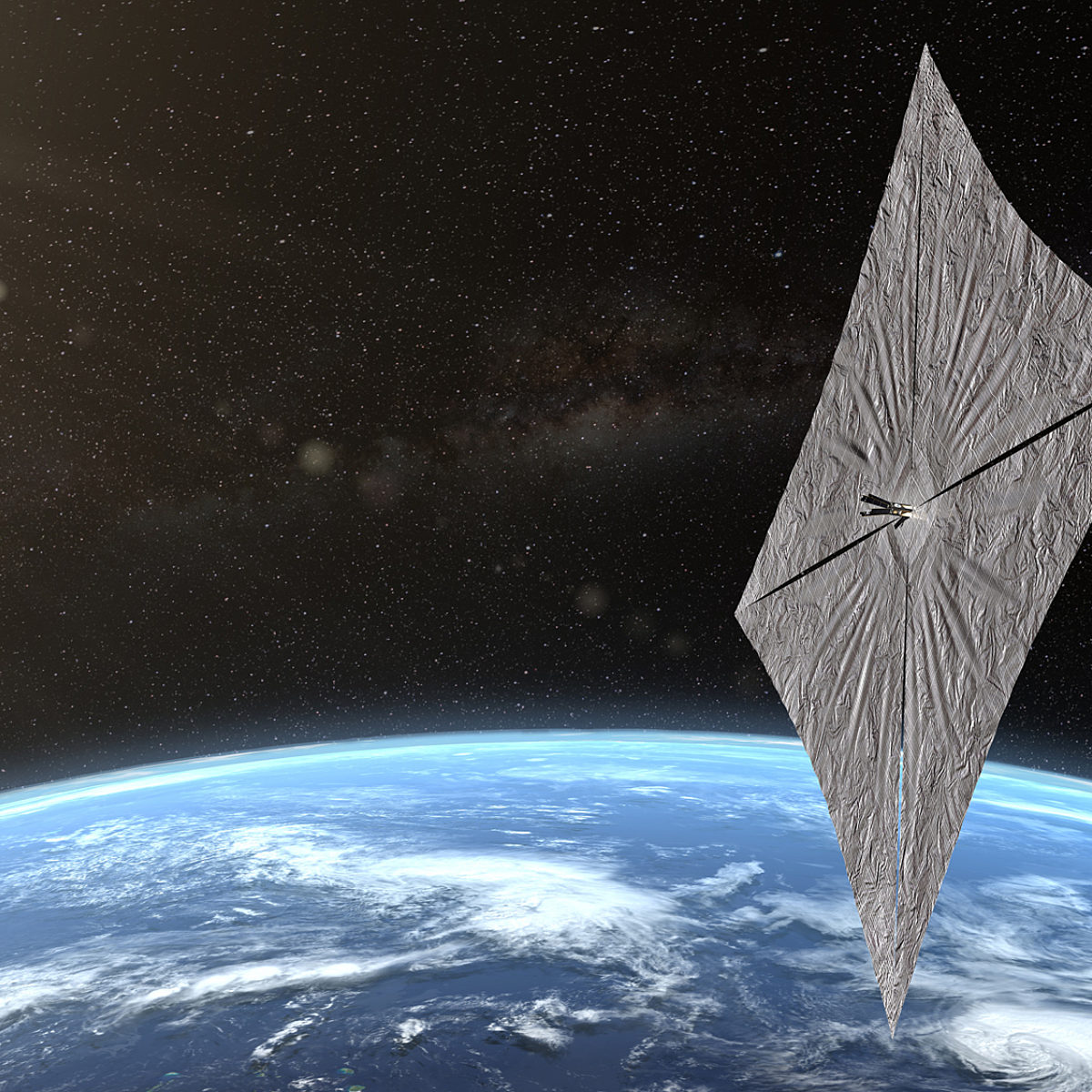The Planetary Society • Jun 17, 2020
LightSail 2 Enters Extended Mission Phase
One year after launching into space, The Planetary Society’s LightSail 2 spacecraft has completed its primary mission phase and is embarking on an extended mission dedicated to further advancing solar sailing technology.
The loaf-of-bread-sized spacecraft launched aboard a SpaceX Falcon Heavy rocket on 25 June 2019. One month later, it deployed an aluminized Mylar solar sail the size of a boxing ring and used sunlight alone to change its orbit, demonstrating the feasibility of controlled solar sailing for small spacecraft. While sunlight has no mass, it has momentum that can be harnessed for propulsion.
During the past year, the LightSail 2 mission team has continued to optimize the spacecraft’s performance and report their results to the space science community. The Planetary Society will now operate LightSail 2 under an extended mission phase, making various operational refinements and studying how the spacecraft’s orbit evolves in response.
“We’ve learned a lot about solar sailing over the past year, and LightSail 2 still has a lot to teach us,” said Planetary Society chief scientist and LightSail 2 program manager Bruce Betts. “During our extended mission we’ll continue making changes to our sail control software, which will help future solar sail missions optimize their performance. We also plan to test using the sail to intentionally generate additional atmospheric drag, which is a way in which future spacecraft could deorbit themselves, cutting down on the ever-growing amount of space debris.”
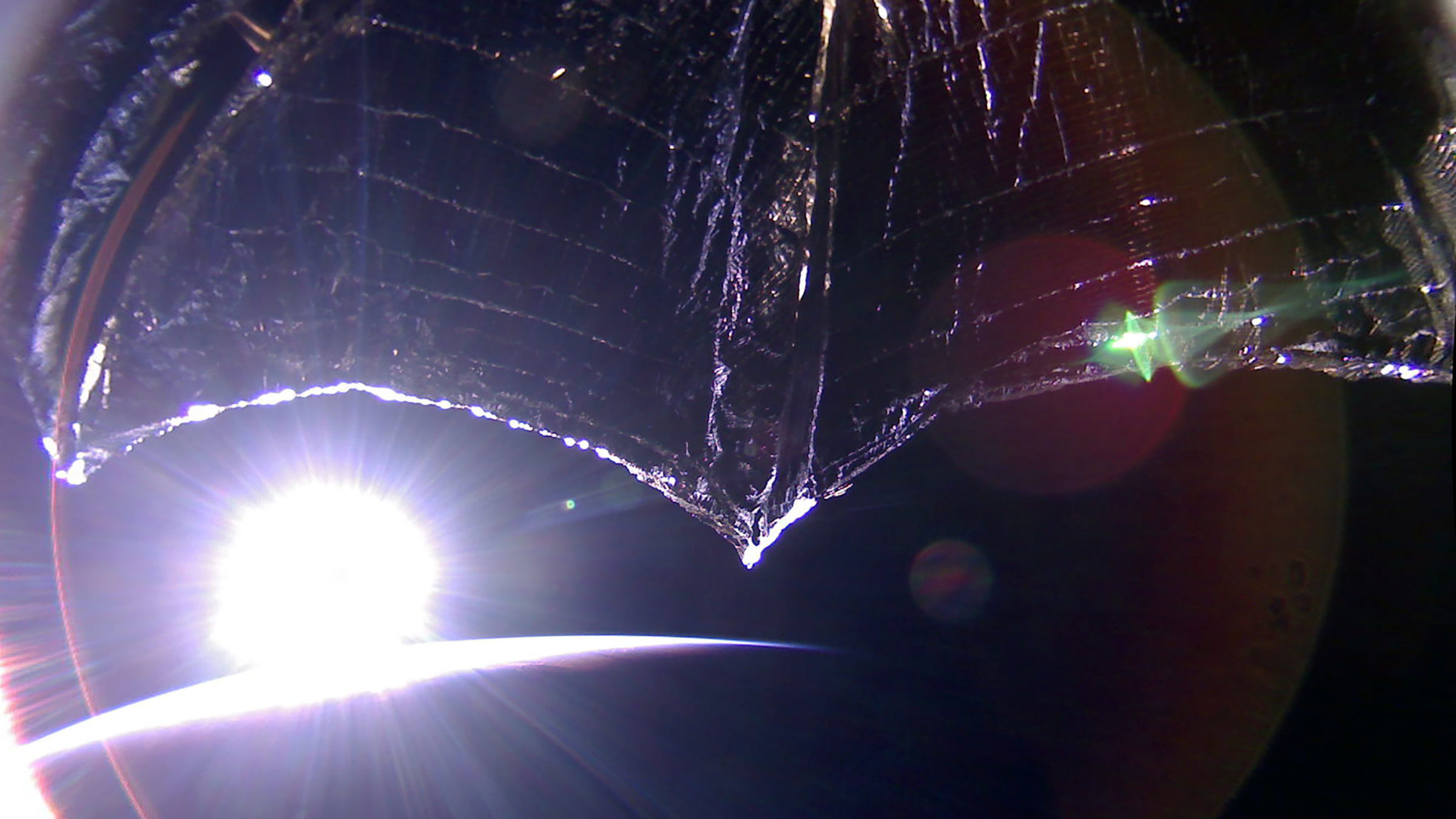
LightSail, a Planetary Society solar sail spacecraft
LightSail is a citizen-funded project from The Planetary Society to send a small spacecraft, propelled solely by sunlight, to Earth orbit.
LightSail 2’s average orbital altitude—now roughly 707 kilometers (439 miles)—is slowly decreasing. Though the spacecraft orbits Earth higher than the International Space Station, the planet’s atmosphere is still thick enough to counteract the thrust gained from solar sailing. Analyses of orbital data show that LightSail 2’s rate of orbital decay is markedly slower in solar sailing mode, when the craft actively positions itself to get a push from sunlight. During some time intervals, the spacecraft even gains enough thrust to briefly overcome atmospheric drag and raise its orbit.
“The LightSail 2 flight team has done tremendous work over the past year to optimize the spacecraft performance and understand how the orbit is evolving,” said David Spencer, the LightSail 2 project manager. “It’s a challenge to orient a large, flexible solar sail in space, and the data collected during our primary and extended missions will provide critical advancements in solar sailing technology.”
Extended mission goals
The LightSail 2 extended mission began on 25 June 2020. Specific goals include:
- Continue to tune LightSail 2’s solar sail performance
- Learn more about solar sailing operation through the study of various operational refinements and orbital evolution in response to sail control
- Continue taking pictures for public outreach and engineering analyses, including to study sail, boom, and spacecraft evolution
- Implement deorbit studies of sail dynamics with the sail acting as a drag sail
- Test a ground-based fault protection algorithm being developed by Purdue University Ph.D. student Justin Mansell
- Continue to share information about the mission and what we are learning from it with the technical community and the public, through peer-reviewed journal articles, conference presentations, direct contact with future solar sailing missions, web articles, and social media
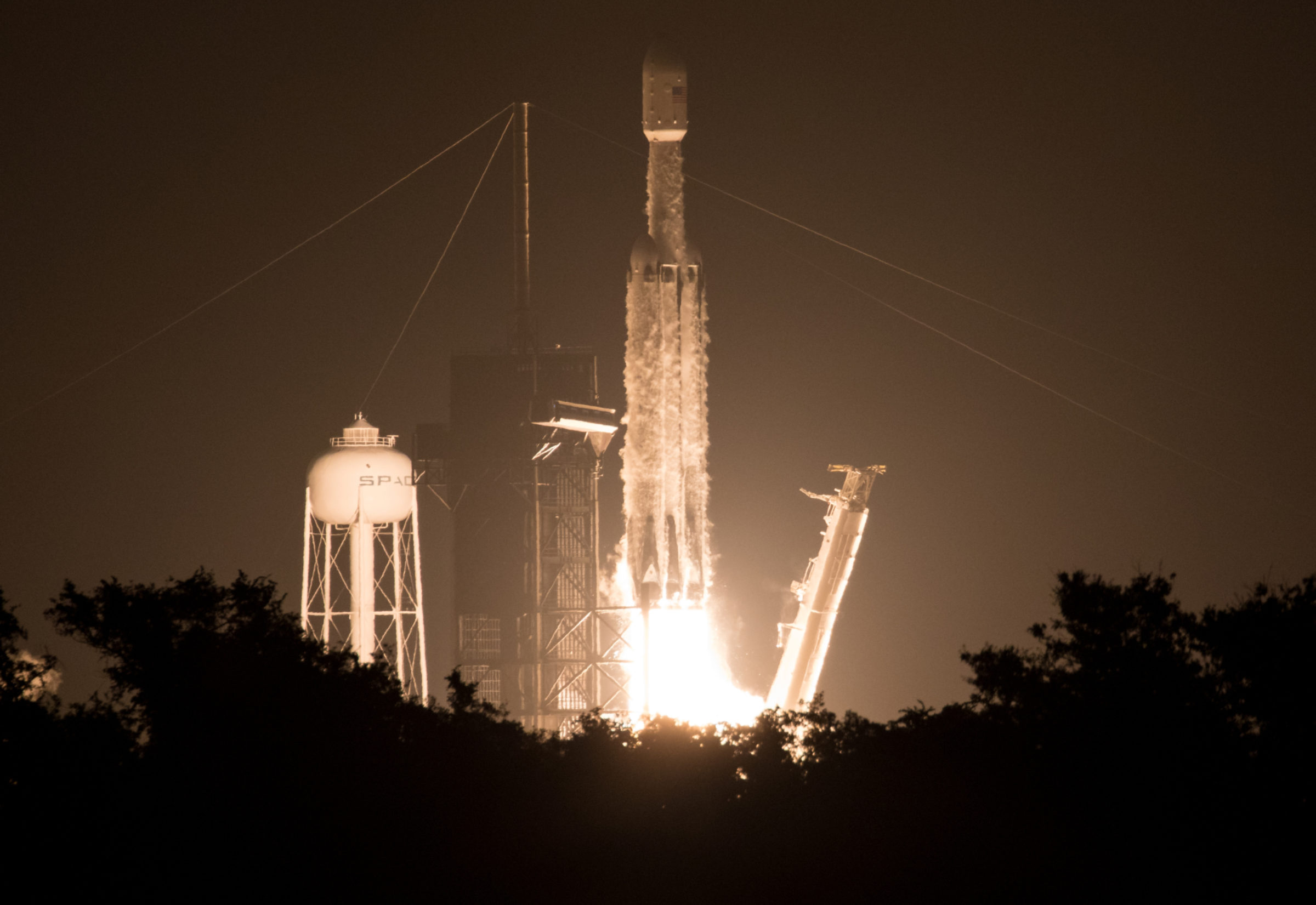
After a year in space, LightSail 2 remains healthy, except for a few minor problems. Images show one of the tape measure-like sail booms has buckled, and an analysis of shadows from the spacecraft’s solar panels shows that one panel is not fully deployed. Neither of these issues has greatly impacted LightSail 2’s solar sailing performance, nor have there been major impacts from the ongoing COVID-19 pandemic, since team members can operate the spacecraft remotely.
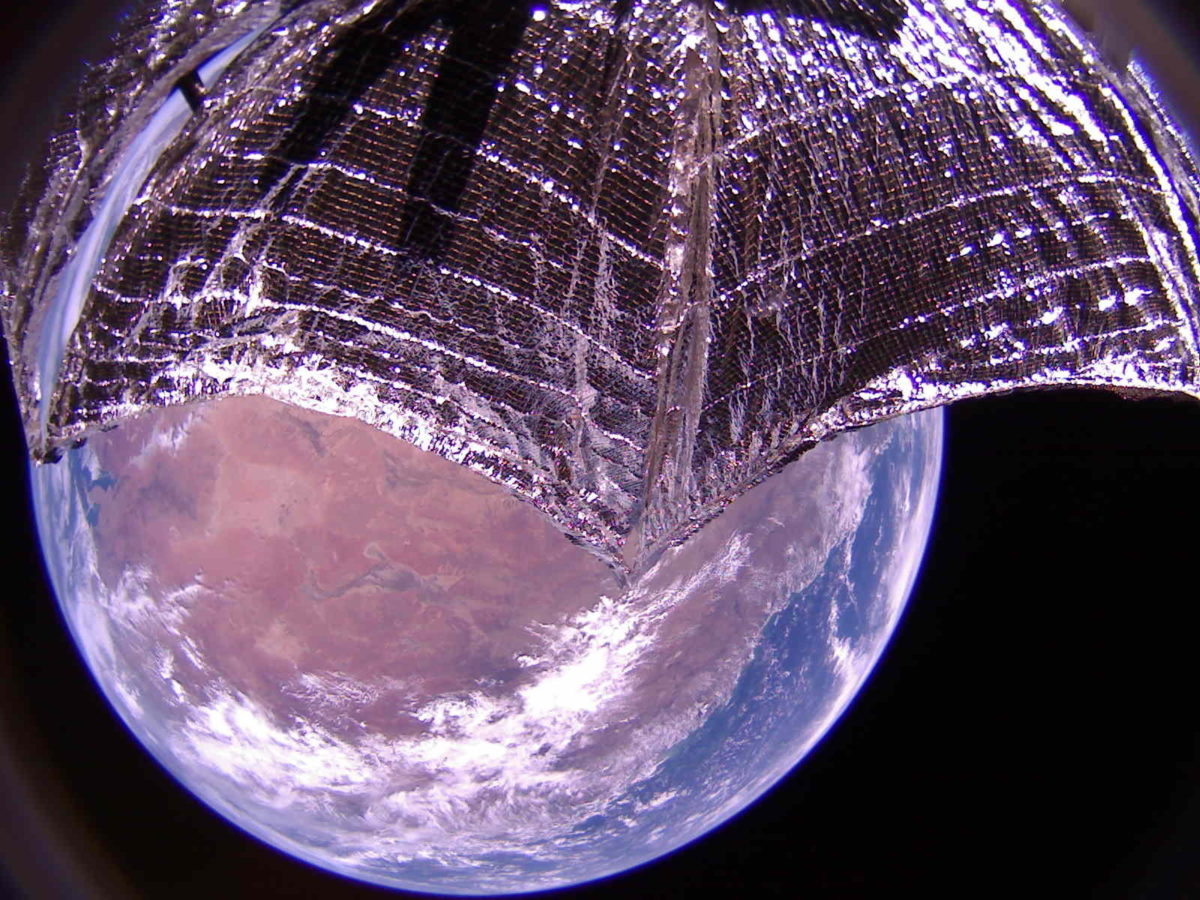
Founded in 1980, The Planetary Society is celebrating its 40th anniversary this year. The Society’s history with solar sailing dates back to the mid-1970s, when co-founder Louis Friedman led a NASA effort to send a solar sail spacecraft to visit Halley’s Comet. Fellow co-founder Carl Sagan promoted the concept on The Tonight Show with Johnny Carson in 1976.
The Planetary Society’s first crowdfunded solar sail mission, Cosmos 1, failed to reach orbit after launching aboard a Russian rocket in 2005. That effort led to the LightSail program, which aimed to demonstrate the feasibility of solar sailing for small, standardized spacecraft called CubeSats. The LightSail 1 spacecraft carried out a successful deployment test in 2015.
The LightSail program cost just $7 million from 2009 through March 2019—an order of magnitude cheaper than a traditional space agency-funded mission. Funding was provided by contributions from 50,000 Planetary Society members, private citizens, foundations, and corporate partners. A 2015 Kickstarter campaign—the most successful space-related Kickstarter in history—raised $1.24 million via 23,500 backers.
“Even a year later, I am inspired and humbled by the tens of thousands of passionate individuals who came together to make this mission a reality,” said Planetary Society chief operating officer Jennifer Vaughn. “As we celebrate the success of LightSail 2’s primary mission, we’re also celebrating the power of everyday people working together to explore space.”
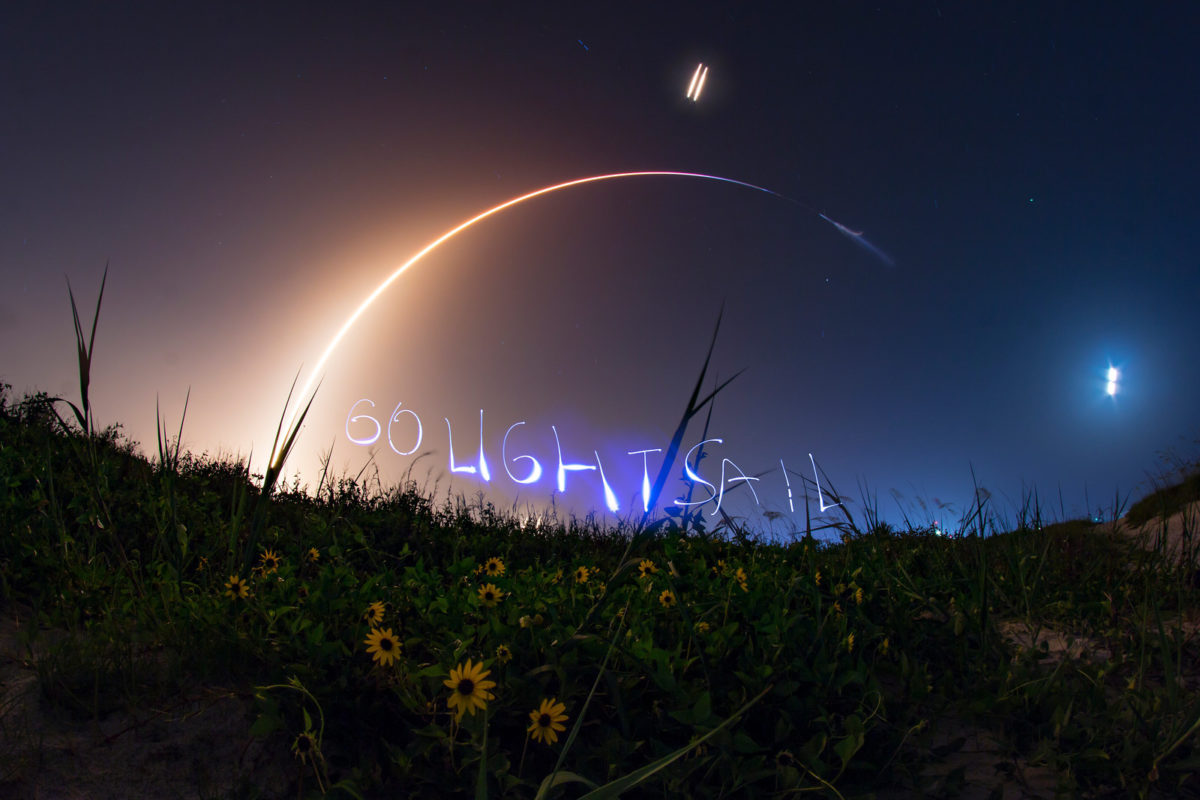
How to See LightSail 2 in the Night Sky
If your latitude is within 42 degrees of the equator, there's a chance you may be able to spot LightSail 2's reflective solar sail.
The LightSail 2 extended mission is expected to continue as long as the spacecraft remains healthy, or until its orbit decays and the spacecraft reenters Earth’s atmosphere many months from now.
Results from LightSail program are being used to inform other solar sail missions, including NASA’s NEA Scout, which will hitch a ride to lunar orbit aboard the first Space Launch System and Orion flight scheduled for next year. NEA Scout will use a solar sail to leave the vicinity of the Moon and visit a near-Earth asteroid. The Planetary Society shares LightSail data with NASA through a Space Act Agreement.
Team members have presented numerous papers on the mission, including at the 70th International Astronautical Congress in Washington, D.C. in 2019, and the AIAA Science and Technology Forum and Exposition in Orlando in January 2020. An article has been accepted for a special solar sailing issue of the journal Advances in Space Research, and the team will present a paper at the 34th annual Small Satellite Conference in August.
Solar sails could one day be used to propel spacecraft far beyond our solar system—possibly even to other stars. A new NASA-backed project is investigating how solar sail-powered spacecraft could fly faster and farther away from Earth than any previous space probe, turn around, and use our distant Sun’s gravity as a giant magnifying glass to capture an image of a planet orbiting another star. The image would be sharp enough to see continents, oceans, and clouds. LightSail 2 provides an early technology development step toward future ambitious space science applications.
The Bold Plan to See Continents and Oceans on Another Earth
A group of researchers, backed by NASA funding, wants to use solar sails and the Sun's gravity to capture an image of an exoplanet so sharp we can see continents, oceans, and clouds.
Support our core enterprises
Your support powers our mission to explore worlds, find life, and defend Earth. You make all the difference when you make a gift. Give today!
Donate

 Explore Worlds
Explore Worlds Find Life
Find Life Defend Earth
Defend Earth


